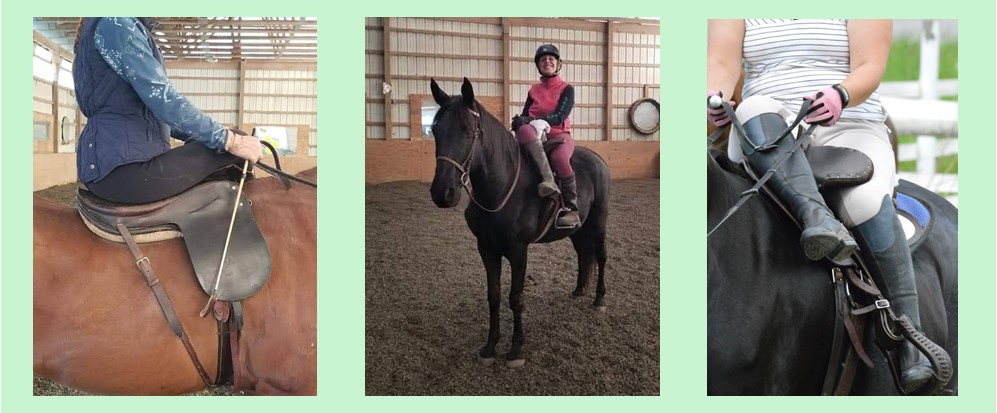
Sidesaddle in the Show Ring
Guidelines for the Judge and aside participant.
INTRODUCTION:
The resurgence of interest in the use of the sidesaddle has found many
competing in the show ring, either in special sidesaddle classes, or
competing against riders in regular classes. This is a summary of
information on aside riding, to assist both the participant and the
judge.
JUDGING:
The horse is being judged in pleasure and performance classes, so in
reality, the rider and the style of the saddle has little bearing on the
placing of the class. The horse ridden aside should perform all gaits,
transitions and movements in the same manner as a horse ridden
astride. The same is true with obstacles, jumps, patterns, etc., to be
displayed in performance classes. The aside rider may cue her horse
with a whip, cane or crop to replace the right leg and should be judged
as an astride rider would be judged in the use of similar aids.
EQUITATION/HORSEMANSHIP:
The aside rider follows the same rules and guidelines as the astride
rider with the exception of the right leg is now on the left side of the
saddle. This is reversed if an off-side sidesaddle is used. For safety and
security, the top leg should rest over the upper horn and hang straight
down and rest on the side of the horse’s neck. The toe of the boot
should be pointing downward, but might be level on shorter riders. With
the modern sidesaddle the right thigh should appear level so that the knee
is not higher than the hip. Hands should be held as appropriate for the
horse’s head carriage and may need to be on either side of the thigh or
slightly above the thigh to avoid interfering with control of the horse.
Tradition does not call for a riding post for the aside rider, but if the
class dictates a rising post, the aside rider should conform.
HUNT SEAT:
The aside hunt seat rider will wear the same attire as her astride
counter part with the addition of the safety apron. Breeches need to
match the color of the apron. In USEF appointment classes a hunting
top hat with veil, hunt canteen, stag horse handled hunt whip and other
appointments will be used to meet the formal attire requirements of the
class. Tradition makes a riding post optional for the aside rider but the
choice to post or not should be maintained for the entire class. A
modern hunt seat sidesaddle must be used.
SADDLE SEAT:
The aside saddle seat rider will wear the same attire as her astride
counterpart with the addition of the apron. The saddle seat apron is
usually longer and may be fuller than the hunt apron so that the
jodhpur pants are completely covered. In some cases, a skirt is
accepted. Tradition makes a rising post optional for the aside rider, but
the choice to post or not, should be maintained for the entire class. A
modern English style sidesaddle must be used. English pleasure and
hunt seat style sidesaddle may be used.
STOCK SEAT:
The aside stock seat or western rider will wear the same attire as her
astride counterpart with the use of the apron or chap apron, instead of
chaps. Modern stock seat or western style sidesaddles must be used.
PERIOD COSTUMES:
Many sidesaddle classes are judged as costume classes or require a
certain period attire to be worn. Leaving the right seam open on a
period costume skirt will allow it to drape safely around the horns.
Velcro closures add more to the safety. Usually the costume is part of
the judging criteria while the performance, behavior and manners of
the horse are still the main criteria being judged.
